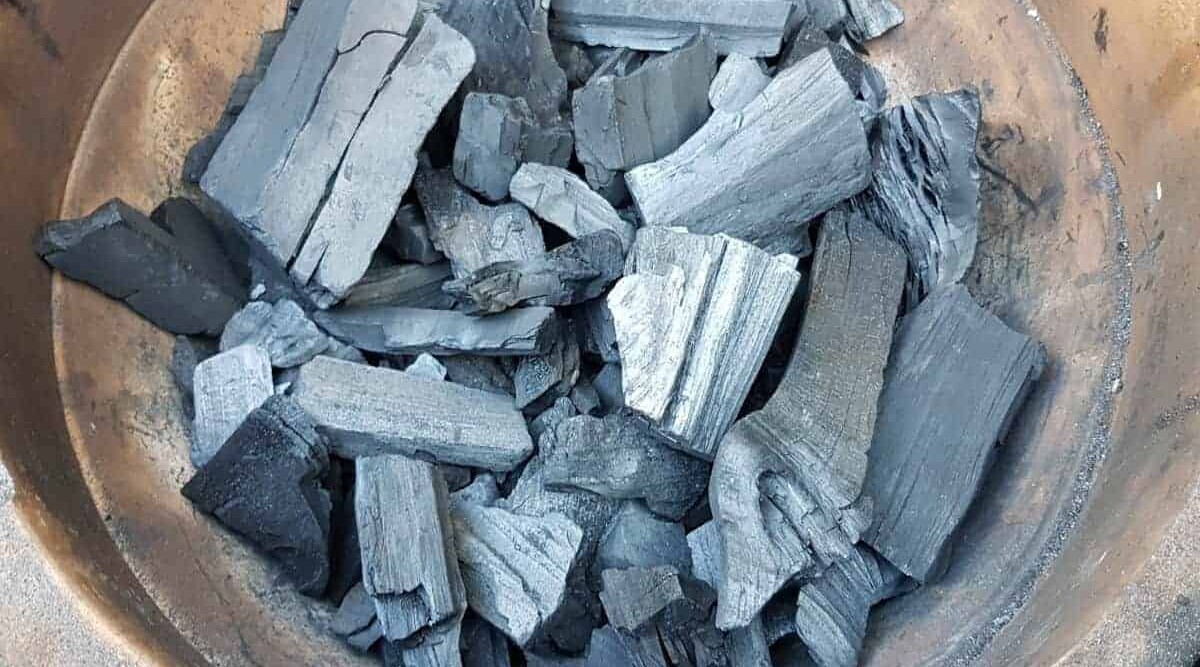
Charcoal is the choice of fuel for barbecue purists everywhere. None of that gas or electricity stuff. (Hey, no malice, we’re only repeating what we read, haha.)
Although lump isn’t the same as briquettes, both need to be kept dry for long-term storage.
The difference is if charcoal gets wet, you have a chance at using it again, but with briquettes, maybe not. And that’s why it’s worth paying some attention to how to store charcoal.
In this article, we’re concerned with preserving and protecting your natural lump charcoal and briquettes from moisture.
You’ll find out if you can salvage your rain-soaked bag of charcoal and how long you can keep it. I’ll also dispel the myth of spontaneous combustion.
My friends, if you can master the charcoal fire for your grill or smoker, you can cook on anything. There is no better heat source. It burns clean, hot, and adds that touch of smoke flavor vital to every delicious barbecue.
To me, it’s a thrill of playing with fire, the aroma of wood smoke, juicy meat and appreciative friends and family when you serve it.
“It’s true that when you grill, you bring testosterone and fire and sharp instruments together,”
— Steven Raichlen
Let’s start by looking at the notion of charcoal spontaneously combusting while in storage. An obviously life-threatening event if true!
Jump to:
Can Charcoal Spontaneously Combust in Storage?
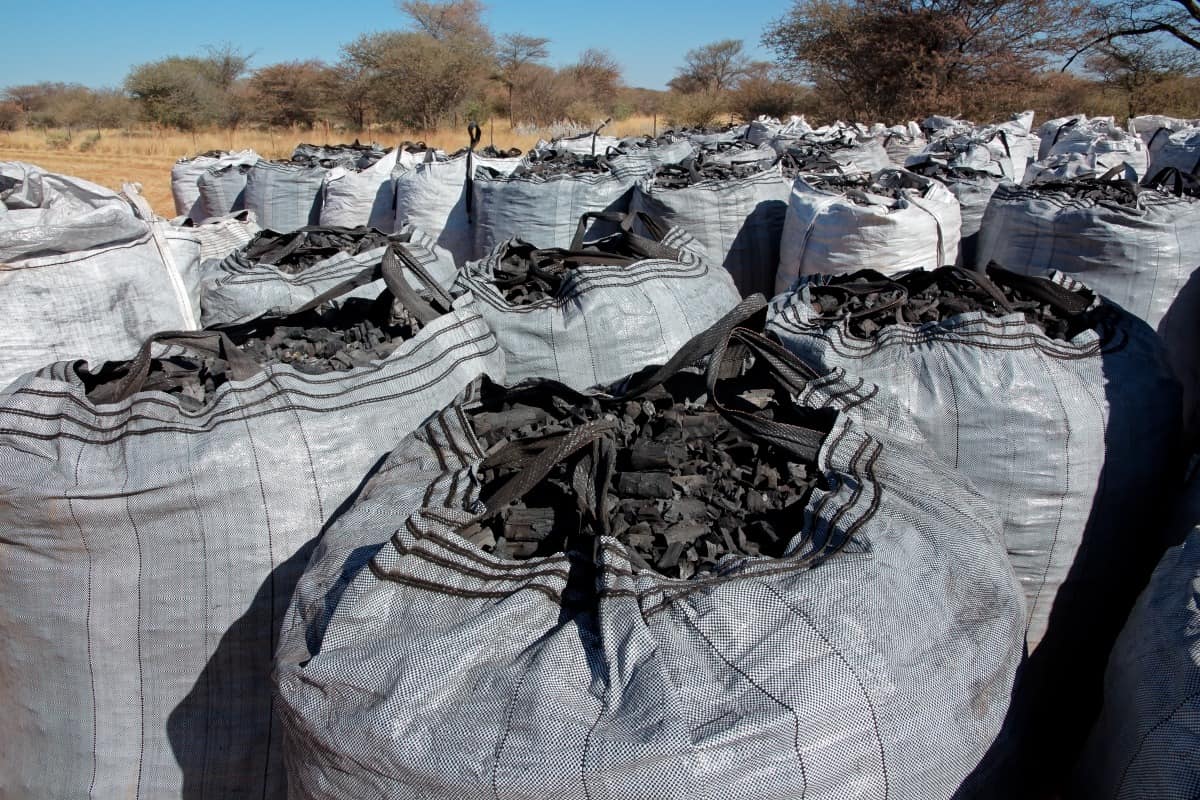
When I started looking into this question, I thought I knew the answer. It seems like every year you hear on the news somewhere that someone’s garage burned up due to spontaneous combustion from a wet bag of charcoal.
But the truth is, the fuel we buy in 20 lb. Bags for smoking and grilling can’t spontaneously combust.
It’s The Wrong Type of Coal
…or the right type of coal, since we do not want it to burst into flames of its own accord!
House coal is the cause of spontaneous combustion stories, not lumpwood charcoal or BBQ charcoal briquettes.
Yes, the type of coal that’s been known to combust spontaneously has been house coal, a fossil fuel, made up of organic matter compressed and heated over millions of years. They have lots of organic compounds and gases in them that can self-ignite if damp and exposed to pressure.
Lumpwood and briquettes are formed of pre-burned wood, where almost all the organic compounds and any gases have already been burned off before they ever get to you.
At a chemistry level, they are entirely different things and the charcoal we use in our BBQs isn’t anywhere near as hazardous to store as house coal, due to their completely different makeup.
It’s Highly Unlikely You Will Ever Store Enough to Combust
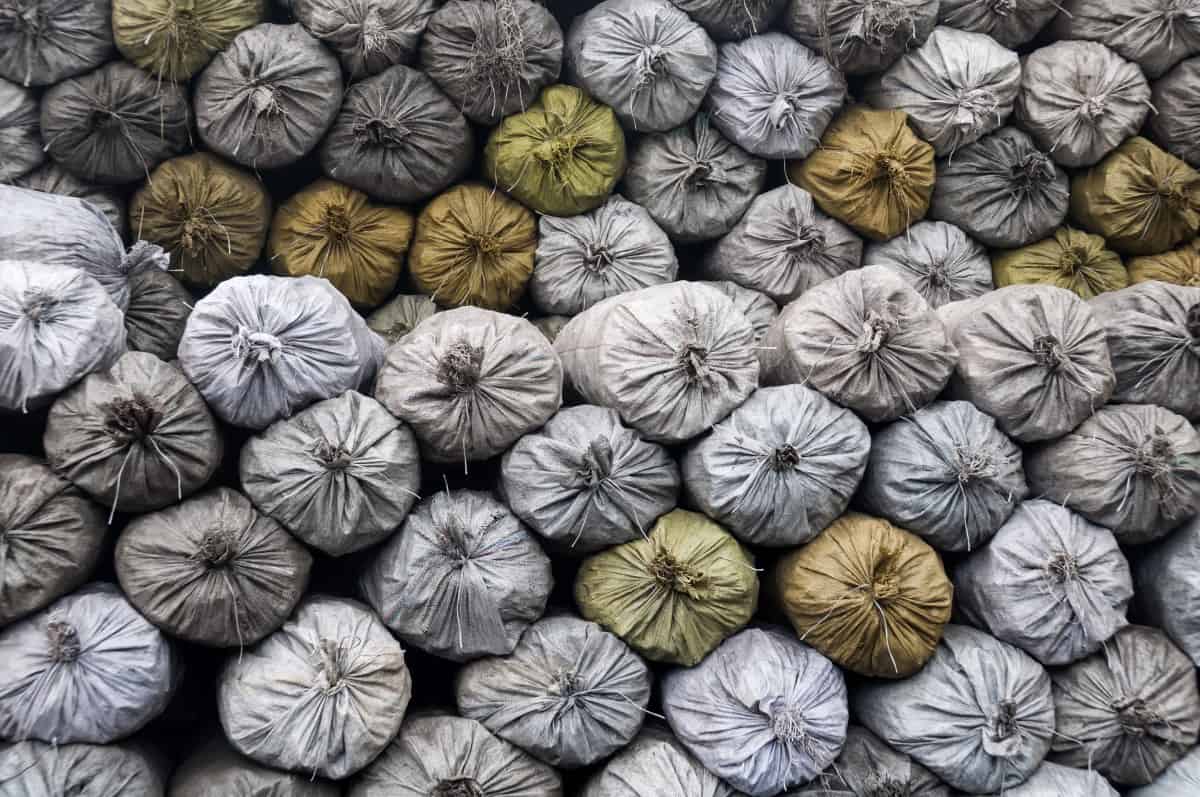
Because one of the things that cause spontaneous combustion is heat created through pressure, you would need a mound of charcoal the size of your house to create the kind of heat necessary for it to combust.
Many things can spontaneously combust, from manure to hay to pistachio nuts. But we’re talking about barn-sized quantities or larger.
The Fire Safety Science Digital Archive posted a 2003 report experimenting with different ways to get a 20-pound bag of charcoal briquettes to self-ignite. They concluded,
“…these data show a bag of charcoal briquettes would have to exceed the size of a typical house (>103 m3) to self-ignite. Self-ignition at ambient temperatures of bagged charcoal briquettes in commercially available sizes is impossible.”
One website dedicated to charcoal, the Naked Whiz, did extensive research on the topic. They also tried unsuccessfully to get various bags of lump to combust spontaneously.
During all experiments, they measured the internal temperature, and it never rose above the ambient air temperature.
You can sleep at night if you have a couple of spare bags in your garage or shed, they’re not going to burn up by themselves.
But, that doesn’t mean you can ignore how you store your lump or briquettes. You need to avoid moisture from the air, the floor, and the sky; else it can become unusable for your cooking!
What Happens If Charcoal Gets Wet?
It happens all the time. Bags that are left outside gets rained on or soaked from snow during winter. The moisture can seep through the bags from a damp garage floor.
Charcoal will soak up water like a sponge because it has pores like a sponge. It’s the same with briquettes because many of the ingredients are very absorbent.
However, all is not lost if your fuel gets wet. You might be able to salvage your soggy charcoal and possibly the briquettes too.
Can You Dry Out and Then Use Wet Charcoal?
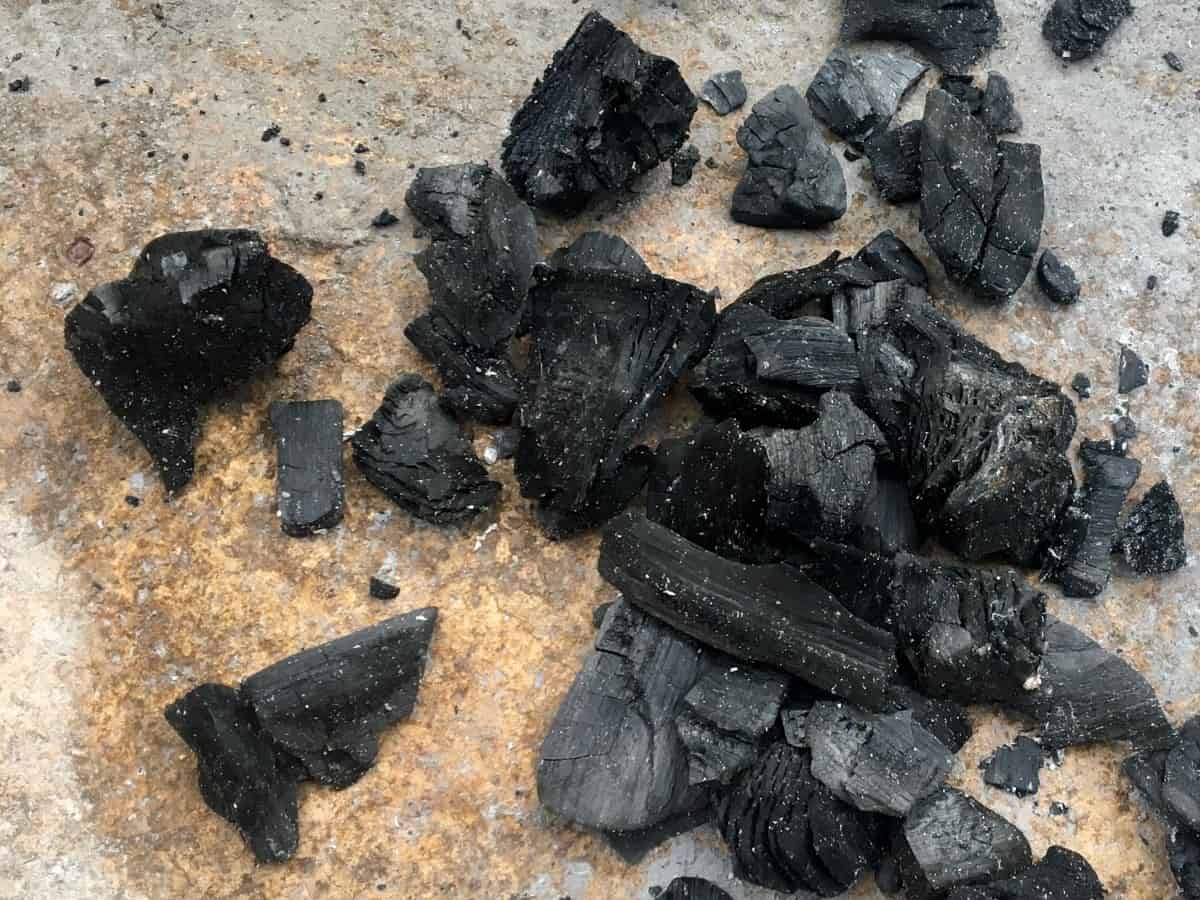
Yes, you can dry out wet lump and use it. Just lay it out in a single layer and let it dry in the sun.
One thing to remember is if they’re not completely dry inside, it will take longer to light, and not burn as hot or evenly. It may even go out if used in a low n slow cook where the vents on your pit create a low oxygen environment.
One good tip if using ‘wet then dried charcoal,’ is to use fresh fuel in the bottom of your chimney and add the once wet but now dried stuff on top. That way, they will dry and ignite more easily from the heat of the fresher lump burning below .
If you have damp charcoal, mix it with new fuel for a high heat grilling fire to use it up. If you’re smoking low and slow, damp charcoal may not get hot enough and give you troubles. You’re better off with fresh fuel for smoking.
Briquettes are another matter. Depending upon the level of moisture, you may or may not be able to dry them out. If they fall apart in your hand, forget it.
If the wet briquettes don’t disintegrate, try and dry them in the sun for a couple of days. Like the lump mentioned above, use them up in a hot grilling fire with new briquettes as starters.
Usually, high-quality charcoal and briquette can be dried and burned. You also need to remember that if it’s damp it won’t heat as well as the new stuff, and it also releases more smoke as it burns.
Does Charcoal Go Bad? Can It Keep Indefinitely?
You can keep charcoal forever if it stays dry, and you don’t pulverize it into dust moving it around. It’s highly stable because it’s almost pure carbon like coal and diamonds.
Scientists have found plants before that partially burned over 400 million years ago, leaving behind some charcoal, and that could still be burned today.
Storing your lump or briquettes in an airtight container is critical for long-term storage. Just keeping them under a shelter is not good enough if you live in areas of the country where you experience high humidity.
The charcoal will eventually absorb enough moisture from the air to affect the quality of the burn. You’ll want to keep it in an airtight container.
If you use self-lighting briquettes impregnated with lighter fluid, the manufacturers say the shelf life is only 1 to 2-years provided that the bag is intact and kept in a sealed container.
This is because the lighter fluid is volatile and will eventually evaporate.
How to Store Charcoal — The Best Charcoal Storage Containers
The goal of any charcoal storage solution is to be airtight and weatherproof. Humidity is the enemy!
Let’s take a look at some options for storage solutions available on the market today.
The Charcoal Caddy

You can buy an “official” charcoal storage container with the Kingsford logo. It holds up to a 24 lb. Bag in the upright position.
The container has a flip top on one end to pour out the charcoal and a handle on the opposite end for easy pouring. The 9-½” x 18” x 19-¼” plastic container is weather-tight and rainproof.
You can use it for lump or briquettes. However, they do not recommend for use with the instant-light briquettes.
Metal Trash Can

If you’re still concerned with fire prevention, you can buy a 20-gallon galvanized trash can for your fuel storage. A 20-gallon can is about 17.5 inches wide and 17.5 inches tall. It can hold about 24 lbs. Of lump.
The lid is snug, but not airtight. Consider using a heavy-duty trash bag as an insert before adding the charcoal. That way you can create an airtight barrier for long-term, high humidity storage.
5-Gallon Plastic Pails

You can find these pails or buckets at almost any home improvement store.
Make sure when you buy you get the lid that fits.
Many restaurants get pickles in pails like these, and you can get them for free or for a nominal charge if you brave asking a few. Just wash them and leave them in the sun for a couple of days to remove the smell.
With pails, you can separate different sized pieces of charcoal or fill them with briquettes. They are airtight and water-proof. They may not hold as much as other containers, but you can buy a few cheap and stack them.
Plastic Trash Cans with Wheels

A wheeled trash can is an excellent solution if you need to keep your fuel in a different area than the grill. Moving around is easy. This model of 32-gallon trash can has a twist and lock lid making it weather-proof. It will hold a 40 lb. Bag of lump.
Most plastic containers with a tight-fitting lid will keep your charcoal dry for a long time. You don’t need anything fancy. As long as it’s weather-proof and airtight, you can use just about anything as a storage bin for your fuel.
Plastic Storage Bins

Plastic storage bins or totes work well for holding one or more bags of charcoal. You can find them in clear or solid colors.
If you plan on storing them in freezing weather, you may want to opt for the stronger, colored totes. The clear plastic tends to crack in freezing weather.
Avoid storage bins or totes that don’t have tight-fitting lids. Remember, you want to keep out humid air.
Common Sense and a Little Planning
Always follow the instructions of the bag which reads, “Charcoal is sensitive to humidity, keep in a clean, dry place. Keep away from children.” Both are good advice. Children tend to use your precious fuel for sidewalk chalk or finger paint.
Unless you stockpile fuel because you found a great sale, it’s best to use it up within a year. However, if you have a summer camp somewhere and need to store your fuel for the next season, just keep it wrapped airtight, and it will be ready to light whenever you return.
Let me know what you use to store your charcoal in the comments below.
Happy grilling!


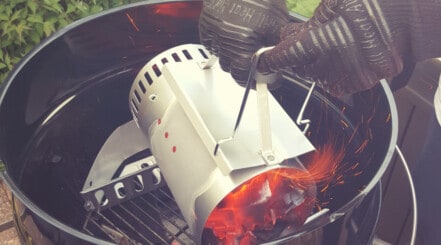
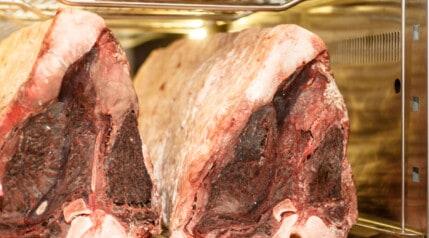
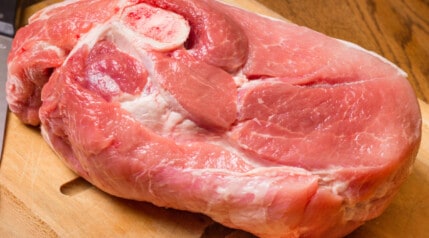
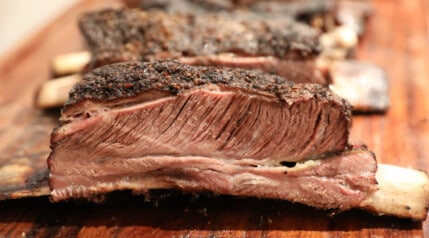
Hi, I am a little surprised about this article. I bought myself a Big Green Egg last year. Following an example on YouTube I started to use 2 plastic pails, 1 for the smaller pieces and 1 for the bigger ones. These pails had a lit and as such were airtight closed. Now, I have had problems with the temperature. When I closed the BGE I could not get the temperature higher than 300 °F and this while I kept the vent at the bottom completely open. I tried all kinds of charcoal but nothing helped. A couple of weeks ago I noticed the day after filling up the pail, the lit was not flat anymore. It looked like there was a pressure from within the pail. I bought myself a new bag of charcoal and used it without first storing it in the pail. No problems with the temperature anymore. So I was convinced that storing charcoal in an airtight container was the wrong thing to do.
Hi Benny,
I can’t explain that I’m afraid. If using a good, natural lumpwood then all gases are burnt off during the charcoal making process, effectively leaving only combustible carbon. So a pressure building within the pail confuses me also and I have no logical explanation for this. I really cannot determine what’s happening from the description sadly.
Mark.
I assume just keeping it stored in its sealed paper bag in a garage would help it keep for a long time? We don’t suffer from much humidity here in Scotland! I buy in 5 kg bags for easier storage and use. Normally get 2 cooks per bag, so it’s not sitting out for too long.
Hi, Euan,
Yes, that would be fine as from your description it doesn’t sound like it will ever get wet at all. So yes, all good!
Hi Mark. I am in Utah. 2-years ago a store here had a bunch of the self-lighting briquettes on sale, so I stocked up. I have them stored in airtight buckets I got at the BYU creamery. I took one of the buckets out to grill some burgers on Memorial Day. They would not stay lit or retain heat even with lighter fuel. I tried again 2 days later with the same results. I tried everything. Balls of newspaper, blowing on it, more lighter fluid. They would not stay lit. Any ideas what the problem could be?
Hi Shauna,
To be honest, I never use self-lighting briquettes as I prefer to stay away from any fuel that has excessive additives in, and I always advise others to steer clear of them too. I do remember many, many years back — before I’d really caught the BBQ bug — using those little bags of self-lighting briquettes where you light the corners of the bag: Always a ton of horrible smoke, difficult to light and keep lit, and to be honest not much heat!
I suspect it’s just a case of the briquettes you have just not being very high quality? But I really cannot say. Do these normally work well for you? Honestly though, my advice would be to check out higher quality briquettes, avoid self-lighting ones, and then you shouldn’t have any issues.
I bought some Kingsford Match Light at the store today. Spent 10 min trying to light it after I got home, to no avail. Doused it with lighter fluid and it lit right up. Any idea what the problem could be?
Not sure Henry. Potentially not sealed and any accelerants evaporated away maybe? But yes, I’m not sure if I’m afraid.
I owned a very successful Dutch oven catering company for years. I kept my coal in an HD black trash bag inside a 30 gallon, metal trash can. During this past 2020 summer, I started using that charcoal. Kingsford, non-quick start. It has been in storage for 10 years and has taken a 2nd hit with fluid to really get going, but still working great considering the storage period.
Here in the Pacific northwest we have a minimum of 70 in a year. I just started making my own charcoal
So I picked up a 55 gallon drum with locking lid with gasket !
Our dog got into our bag of charcoal and my grandmother is worried that it will rot our back porch if it sits for too long. I’m just curious to know if that’s actually true.
Hi Kelsie,
Are you asking if loose charcoal sitting on the floor will rot it if it sits for long? I shouldn’t think so, no. But I don’t want to be responsible if it does! lol. Why not clean it up right away?